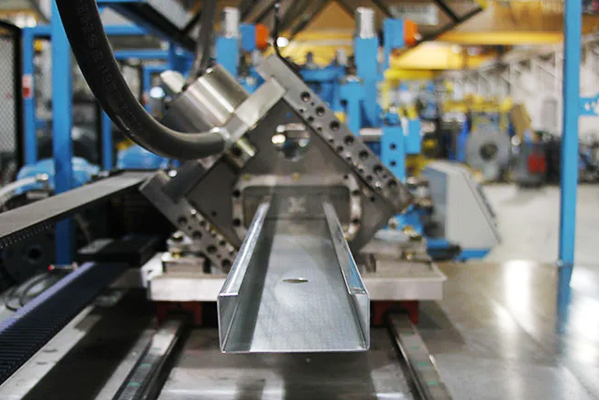Navigation Menu
Contact Us
- Email:
- info@wxavatar.com
- Address:
- Yurong Village, Yuqi Street, Huishan District, Wuxi, China.
Release Date:Mar 27, 2025 Visit:57 Source:Roll Forming Machine Factory
The Three Advantages and Three Disadvantages of Steel Frame System Equipment
Steel frame system equipment, encompassing machinery like roll-forming machines, automated cutters, and robotic assemblers, has transformed modern construction by enabling the efficient production of steel structural components. While this technology offers significant benefits, it also presents challenges that stakeholders must navigate. Below, we explore the three key advantages and three primary disadvantages of steel frame system equipment.
Advantages of Steel Frame System Equipment
1. Precision and Consistency
Advanced computer-controlled machinery ensures steel components are manufactured to exact specifications.
Laser-guided cutting and CNC (Computer Numerical Control) systems eliminate human error, producing uniform studs, beams, and panels.
CAD/CAM integration allows seamless translation of digital designs into physical parts, ensuring structural integrity.
Impact: Reduces rework and material waste, critical for complex projects like high-rises or modular buildings.
2. Efficiency and Speed
Automation accelerates production timelines and reduces dependency on manual labor.
Roll-forming machines can shape steel coils into profiles at speeds exceeding 100 feet per minute.
Prefabrication enables off-site manufacturing of components, slashing on-site assembly time by up to 50%.
Impact: Ideal for projects with tight deadlines, such as emergency housing or commercial developments.
3. Design Flexibility
Modern equipment adapts to diverse architectural demands.
Adjustable tooling allows quick changes to produce varying steel profiles (e.g., C-sections, Z-purlins).
Robotic arms assemble custom configurations, supporting innovative designs like curved walls or cantilevered structures.
Impact: Enables architects and engineers to push creative boundaries without compromising strength.

Disadvantages of Steel Frame System Equipment
1. High Initial Investment
The cost of acquiring and installing advanced machinery is substantial.
Roll-forming lines and laser cutters can cost hundreds of thousands of dollars, limiting access for smaller firms.
Infrastructure upgrades, such as reinforced flooring or three-phase power, add to expenses.
Impact: High barriers to entry may concentrate market dominance among large contractors.
2. Maintenance and Operational Costs
Sophisticated equipment demands ongoing upkeep.
Wear and tear on high-speed rollers or cutting blades necessitates frequent replacements.
Energy consumption for heavy machinery increases utility bills, particularly in energy-intensive processes like welding.
Impact: Long-term operational costs can erode profit margins if not managed carefully.
3. Dependency on Skilled Labor
Operating and troubleshooting advanced systems requires specialized expertise.
Training gaps: Few workers possess experience with CAD/CAM software or robotic assembly systems.
Labor shortages: Regions lacking technical education programs face recruitment challenges.
Impact: Projects may face delays or quality issues if skilled operators are unavailable.
Balancing Pros and Cons
While steel frame system equipment drives innovation, its drawbacks highlight the need for strategic planning:
Cost Mitigation: Leasing equipment or adopting modular systems can reduce upfront expenses.
Preventive Maintenance: Scheduled inspections and predictive analytics tools minimize downtime.
Workforce Development: Partnerships with vocational schools can bridge skill gaps.
Conclusion
Steel frame system equipment offers unparalleled precision, speed, and adaptability, making it a cornerstone of modern construction. However, its high costs, maintenance demands, and reliance on skilled labor require careful consideration. By addressing these challenges through innovation and investment, the industry can fully harness the potential of steel framing technology, ensuring it remains a viable solution for sustainable, resilient, and ambitious building projects worldwide.